Solar Energy
An overview of Solar Energy Systems and how they save money year on year
It is a common misconception that solar thermal systems only work when the sun is shining. Solar thermal systems work with diffused radiation, so even on a cloudy day you will still get a good yield of energy from the sun to heat hot water.
The most abundant source of energy available to us is the sun. On average in Europe we receive 1000 KW Hours per m2 per annum as irradiated energy from the sun, equivalent to approximately 100m3 of Natural gas or 100 litres of oil. The principles of solar thermal systems are fairly basic, harnessing solar energy from the sun to heat hot water. Designing a system that efficiently does this requires advanced technology and careful planning. Solar thermal systems will provide a typical UK household with
50-60% of its hot water in a year. In the summertime this will be as high as 100% of daily usage meaning that the boiler can be turned off saving energy and money. In the Winter a lower level of energy is available from the sun so a backup heat source will be needed like a boiler. It’s good practice to treat a solar system as your primary hot water heat source and try to maximise its potential.
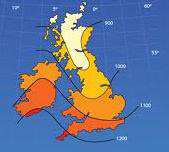

1. Solar collectors
Collectors are what convert the solar energy into hot water. Mounted on roofs ideally with a southerly aspect to get the best performance.
If a roof is not available then they can be mounted on an A-frame weighted down on a flat surface. The solar fluid (GLYCOL) flows through the panel extracting the solar heat and flows on to the hot water cylinder where it is passed into the domestic hot water supply.
There are two types of solar collector. Evacuated tubes and Flat plate.
The choice of panel depends on the installation which would be assessed at survey stage.
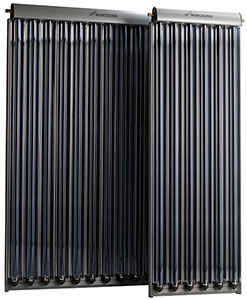
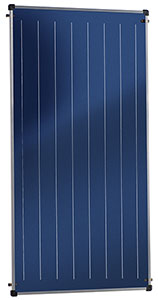
2. Pumping Station
The pumping station provides the circulation for the GLYCOL, circulating it through the panels extracting the solar heat and passing it on to the hot water cylinder where it is transferred into the domestic hot water supply. It also has temperature gauges and a pressure gauge for monitoring, filling points and pressure relief safety valve.
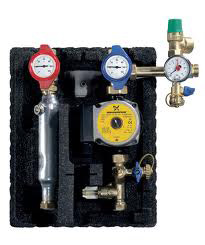
3. A dual coil cylinder
A dual coil cylinder has the same functions as a standard hot water cylinder the only difference is that it has an extra coil in the bottom of the tank. This is the solar coil. The cylinder would also have more capacity. The boiler coil which is the top coil heats the top two-thirds of the cylinder and the solar coil heats the whole cylinder.

4. Controller
A controller is a unit that allows the user to monitor what the system is doing. It will tell the user the following:
1. Temperature of collectors
2. Temperature of the hot water cylinder
3. Whether the pump is circulating, if the solar panels are hot enough (10 degrees warmer than the cylinder).
4. Any faults
5. Energy generated.
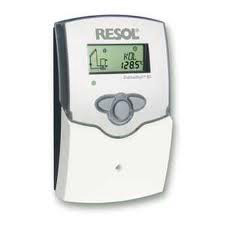
Find out more about our installation and servicing for Solar Thermal Systems Read More
Contact Us
To get a FREE no-obligation quote, call Tel: 01202 386439 or Mobile: 07887 647921 now or complete our online enquiry form.
